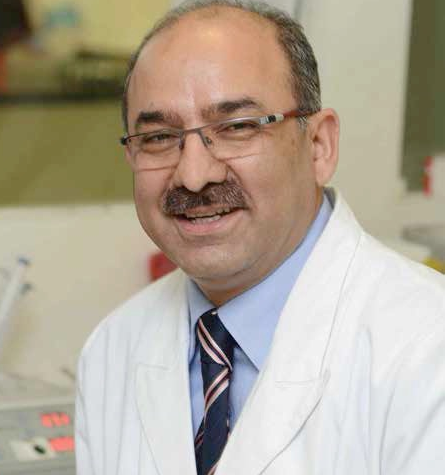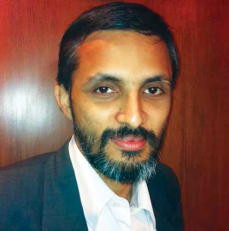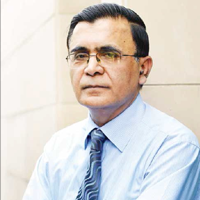
 Donating blood is a philanthropic act whose impact is immeasurable. Indians are by nature charitable, but where blood donation is concerned, it has yet to catch the fancy of the common man. Ekta Srivastava, ENN, finds out more
Donating blood is a philanthropic act whose impact is immeasurable. Indians are by nature charitable, but where blood donation is concerned, it has yet to catch the fancy of the common man. Ekta Srivastava, ENN, finds out more
Blood is the liquid of life for each and every life form in this planet. Every 24 hours, the human heart pumps 36,000 liters of blood over a distance of 20,000 km through the blood vessels, pumping approximately 70 ml of blood with each beat. The heart beats approximately 35 million times a year, pumping one million barrels of blood. A kitchen tap would require to be put on for 45 years to equal the quantity of blood pumped by an average heart in a lifetime.

Many time one may have heard the statement that it was not the accident that killed him, but the transfusion. The unchecked buying and selling of contaminated blood continues to take lives of numerous people, however healthcare industry in India is booming in the rapid manner. While corporate are making the country the best destination for medical tourism, government is promising lot about the role of technology being introduced in the healthcare sector. But the simple thing of blood transfusion still lacks proper watch and standards to be established and followed around the country.
A multibillion dollar business or profession spread worldwide, blood transfusion industry in real sense is becoming a production industry with all the components of business. While, somewhere in our minds we fear calling it a business, so as to not annoy the donors and general population though these stakeholders are churning out big sum of money from this.
In India we have the decentralized system of the blood transfusion system, with differing standards of services and quality in every state and periphery. They vary from large blood component centers of international standards to small blood banks, using whole blood only. A majority of the blood banks belong to the latter category with limited facilities to be able to adequately address quality issues in testing. Upgrading them as part of modernization is bound them to raise costs, making them economically unviable.

Blood Administration
We have four types of blood banks/ centers from the administrative point of view in India. They are managed by the public sector, Indian Red Cross Society (IRCS), non-government organizations (NGOs, on not for profit basis) and corporate or commercial sectors. Roughly, about 55 percent blood banks are from the government sector, 5 percent from the IRCS, about 20-25 percent are from the NGO sector and the rest are from corporate or profit-making sectors. If we look into the government sector, blood banks are run by blood bank in-charge or Blood Transfusion Officers (BTOs) who takes care of regular administration under the guidance of the Medical Superintendents or the Director of that hospital. Many a times, the head of laboratory or pathology also takes charge of the blood bank. If it is a medical college (government or private), usually the head of the department of Pathology takes additional responsibilities of the blood bank. There are about 40 blood banks in the country which are separated from the Pathology department as independent Transfusion Medicine (Immunohematology & Blood Transfusion) department where trained technical personnel take care of regular administration. In case of IRCS blood banks, there is a committee which officially manages administration through the blood bank in-charge or BTO. However, there is always some control from the local or state-level IRCS in the management. In the fourth sector, i.e. in the corporate sector, management is in better hands. Because they have to manage mainly with a small number of family replacement donations, professional hospital administrators or experienced businessmen manage blood banks behind the scene.
World of Illegal Blood Trading
According to AIDS Action, this illegal trade of blood is not just a third world problem. This is a global, multi-million dollar industry with China, Russia, India, Bulgaria and Africa taking the lead in this illegal and unethical business of life. Like kidney transplantation, human bone and child trafficking rackets, blood trade too runs deep into the system. Without doubt, this trade cannot flourish and be widespread in the country without the involvement and support of local agents, mafia, police, politicians, and many more unknown entities.
Few months back during one of my investigation, I found several agents and professional donors in and around government set-ups like AIIMS, Safdarjung hospital, Ram Manohar Lohia hospital and many more. Mainly the victims of this cycle are slum-dwellers, daily-wage earners, migrating population, rickshaw pullers, and push-cart vendors, shelter-less youth, street kids, or just someone in need of quick money, who are easily recognized by the agents or the brokers. Shockingly, when authorities are adamant on the fact that illegal blood trading has been completely vanished from the country through stringent counseling and other way, getting any blood group in just Rs 3000 to Rs 3500 is not an easy task.
While, just looking after these youngster who are ready to give blood at any time and not even aware of the test that are required before the donation and the number of donation in the month, there are commercial blood donors (CBDs). One, who are well aware of the requirement for donating blood on a periodic basis and have been doing this for a long time,. CBDs are mostly unskilled people who get into this trade and stick to it as a job. They operate through middlemen or agents in contact with the hospital, clinic or pathology laboratory. Each CBD is bled more than five times in a month, and some are donating a number of times a week.
NGOs plan of action
The most common reason is philanthropy. If an NGO wants to do philanthropic work in the medical field, usually they want to start a blood bank. Probably, blood bank runs on philanthropic voluntary blood donation and these NGOs want to supply blood at a cheaper price. They initially fail to realize that it is a branch of medicine which needs sophisticated equipment and highly skilled manpower. Many non-medical trustees or promoters do not realize that supply of safe blood is more important than giving free blood. When the nitty-gritty of the Drugs and Cosmetics Act comes, they fall back on a few known medical personnel for help. Others want to create blood banks as a base to start commercial ventures like plasma fractionation, or as a source for hyperimmune serum and other blood components for business.
Illegal about the blood trade
Professional donors sell their blood, which is of very poor quality and can transmit very dangerous diseases to the recipient. It is illegal to take blood from any professional donor.
The moment the minimum basic rules of blood donation are flouted, it ceases to be the humanecompassionate act. When any trade violates the gazette rules and norms, it is illegal.
Indian Constitution: Article 21 under part III of Indian Constitution spells out that no person shall be deprived of his life. Safe blood transfusion comes under legal protection as it is life-saving and also fatal.
Drugs & Cosmetics Act: Human Blood is covered under the definition of Drug under Sec. 3(b) of Drugs & Cosmetics Act, which establishes regulations for blood banking and transfusions.
The Consumer Protection Act of 1986 also covers blood as a commodity.
Indian Panel Code chapter XIV, sections 269 and 270 provide for protection against spread of infectious diseases due to negligent and malignant acts.
National Blood Policy: Additionally all aspects of blood donation, collection, storage, use, etc come under the purview of the National Blood Policy that strictly bans sale and purchase of blood.
With the Blood banks and hospitals across India reporting an acute scarcity of blood after a Supreme Court order to ban payment to donors came into effect on 1 January 1998, the blood trade which was already a flourishing business went underground. With no alternate arrangement in place yet, to ensure regular supplies of blood, the government is forced to ignore the many illegalities that dangerously flourish around blood banks here and elsewhere in India.
Why is the blood trade thriving in India?
Indias annual demand for blood is about six million units but blood banks manage to collect only about three million units each year. Nearly a third of this comes from paid (professional) donors. The recent ban by Supreme Court in 1998, stopping payment for blood donors has failed to stop the trade in blood and has driven these businesses underground, far away from the eyes of law and healthcare authorities. Blood trade in India is widespread and needs a lot more than Government machinery to tackle it. Some legislation is simply waiting to be made and need that extra push from the informed public. It makes a difference when each of us tackles it in our individual capacities.
Lets discuss what these medical professionals think is the best way to curb this blood trade menace.
Be a part of Elets Collaborative Initiatives. Join Us for Upcoming Events and explore business opportunities. Like us on Facebook , connect with us on LinkedIn and follow us on Twitter , Instagram.












